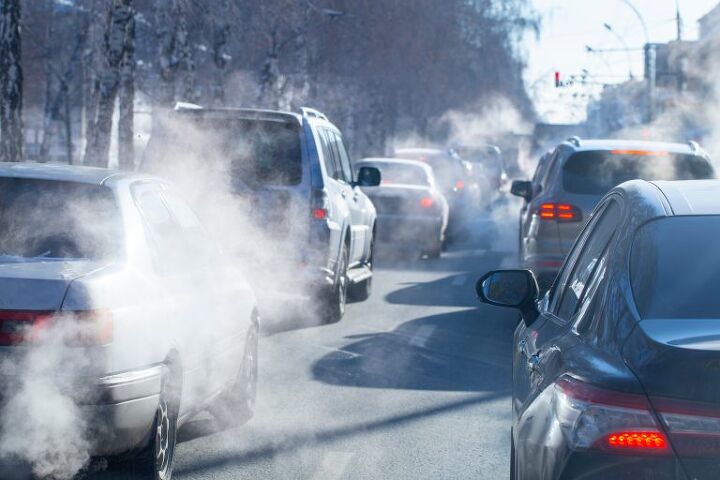Biden Fuel Rules Unveiled, Will Exceed Obama's Goals

The Biden administration is proposing a return to the Obama-era fuel-economy regulations over five years.
After that, the rules will get tougher, with the goal of getting 40 percent of American drivers into electric vehicles.
The exact numbers, which would come from the Department of Transportation and the Environmental Protection Agency, haven’t yet been finalized. They are expected to be released next week, but the Associated Press has apparently spoken to sources who have been briefed on the plan.
The Biden administration has a goal of cutting the nation’s output of greenhouse gas by at least half by 2030. The new rules would begin with the 2023 model year and use the California compromise of 2019 as a template. That agreement was reached between BMW, Ford, Honda, Volkswagen, and Volvo. That deal increases the mileage standard and is supposed to cut greenhouse gas by 3.7 percent per year.
The requirements will move to a 5 percent annual increase in mileage standards by 2025, along with a similar reduction in emissions. From 2026 on, it will push higher, though the exact number isn’t known. Estimates are 6 or 7 percent.
The EPA may also have a nonbinding statement requiring requirements to climb even more quickly after 2027, in a bid to force the auto industry to sell more zero-emission vehicles. In the meantime, the agency is asking that 40 percent of new-vehicle sales by 2030 be that of EVs.
It’s unclear if the administration aims to restore credits for EV sales, though its infrastructure proposal includes 500,000 EV charging stations and makes mentions of tax credits and rebates as part of an effort to increase EV sales.
As you no doubt know, this is all happening at a time in which American consumers are swallowing up trucks and SUVs, which are generally less fuel-efficient. Meanwhile, the market share for EVs sits at 2 percent, though analysts expect it to rise rapidly in the years to come.
Transportation-sector emissions are the single biggest American contributor to climate change.
[Image: NadyGinzburg/Shutterstock.com]

Tim Healey grew up around the auto-parts business and has always had a love for cars — his parents joke his first word was “‘Vette”. Despite this, he wanted to pursue a career in sports writing but he ended up falling semi-accidentally into the automotive-journalism industry, first at Consumer Guide Automotive and later at Web2Carz.com. He also worked as an industry analyst at Mintel Group and freelanced for About.com, CarFax, Vehix.com, High Gear Media, Torque News, FutureCar.com, Cars.com, among others, and of course Vertical Scope sites such as AutoGuide.com, Off-Road.com, and HybridCars.com. He’s an urbanite and as such, doesn’t need a daily driver, but if he had one, it would be compact, sporty, and have a manual transmission.
More by Tim Healey
Latest Car Reviews
Read moreLatest Product Reviews
Read moreRecent Comments
- MaintenanceCosts Being married to someone who developed acute sensitivity to some VOCs after a smoke inhalation incident, I'm more aware of these things than I used to be. When we bring home a new car we've developed a protocol that helps quite a bit. First, leave the car in the sun for a day or two to speed the offgassing. Second, after doing that, wipe down all the surfaces in the car with fresh water. Third, leave the windows open when the car is in the garage. Fourth, wipe down again with water after a couple of weeks. Doing that substantially reduces new car smell pretty quickly after purchase.
- Bd2 While this is not breaking news a 11, it is a good reminder especially to the ultra affluent who purchase vehicles on a more regular basis.
- SCE to AUX At least with direct sales, there's one less party to point fingers about pricing.
- Wjtinfwb Malibu will be the Ford Panther of this decade. We won't miss it until its gone. GM will tell you there's no market for sedans anymore. Honda, Toyota, Nissan, Hyundai, Kia, Mercedes-Benz, BMW, VW, Audi and others will challenge you on that. GM gave up on Malibu as soon as it was introduced in 2017, no development, only de-contenting and relegation to "Fleet" status. I've had a lot of Malibu rentals, they were fine. Not as nice as an Accord or Camry, but preferable to an Altima, Sentra, Sonata or Jetta in my mind. A little development in the powertrain, refinement of the suspension and clean up on the styling would have done wonders. But that's not the GM way. Replace it with something else equally mediocre or worse but charge more because it sits higher. It's a shame GM has been relegated to such a back of the class manufacturer when spectacular cars like the C8 Corvette show what they can do when someone really gives a damn.
- SCE to AUX This has been a topic for at least four decades.In a world filled with carcinogens, you'd need an enormous study to isolate the effects of seat foam compared to every other exposure we have.Besides, do people really drive around without any fresh air purging the cabin?


































Comments
Join the conversation
How will companies pull this of? 2023 models have already been designed. How will companies decrease consumption year over year when models are set for 4-6 years? This looks unobtainable. I what about when all the soot created is more of an issue because of trying to make these engines more fuel efficient.
And the clown show in Washington becomes more destructive by the day. 2022 needs to get here quick so we can put a stop to all of this. The adults need to take back control of the house and senate from the children and then we take the White House in 2024. At that time we can start rebuilding and allow our country to heal.